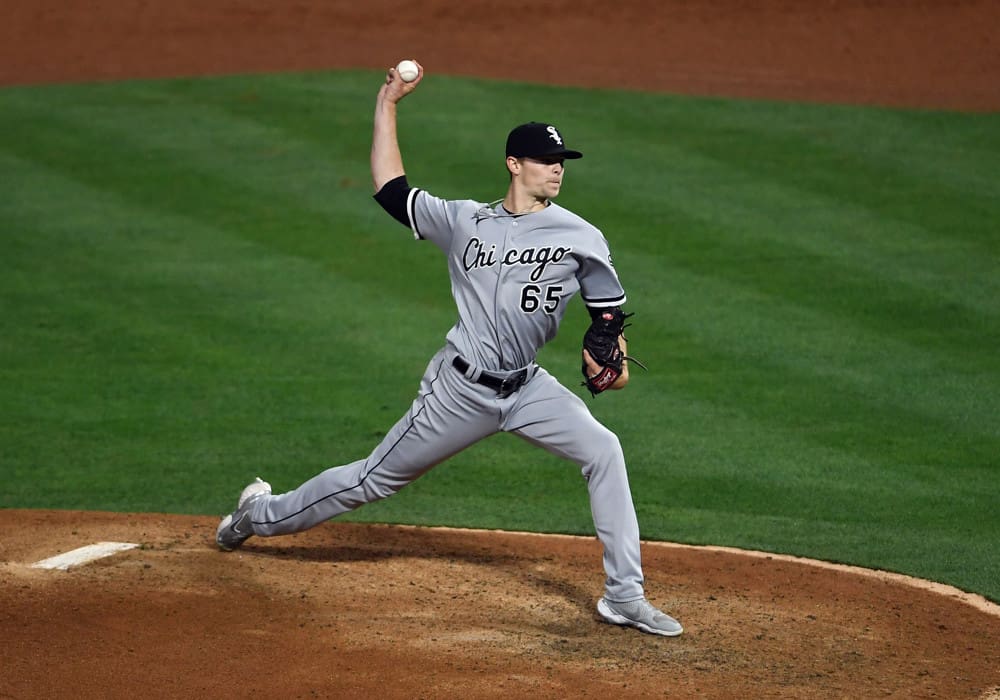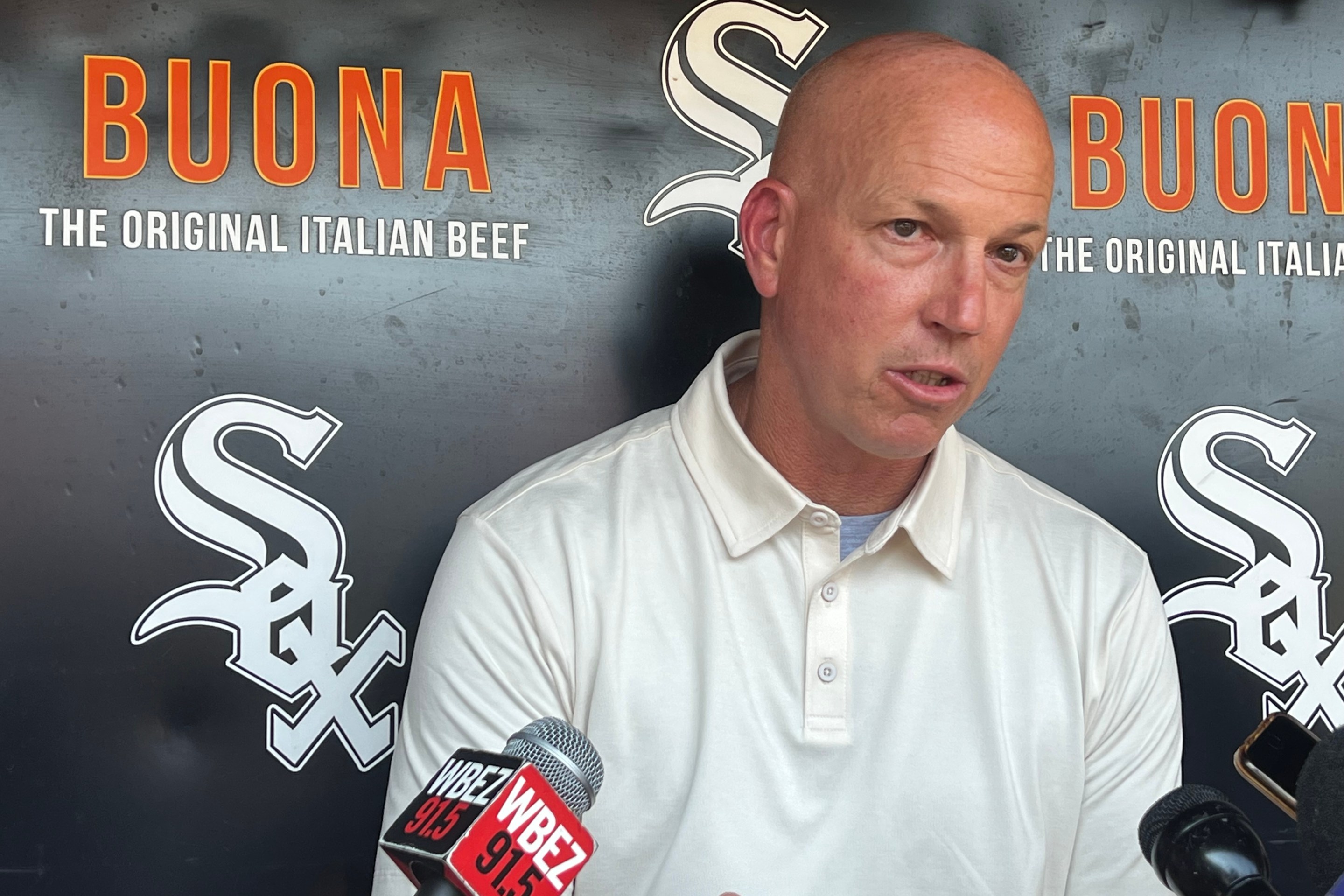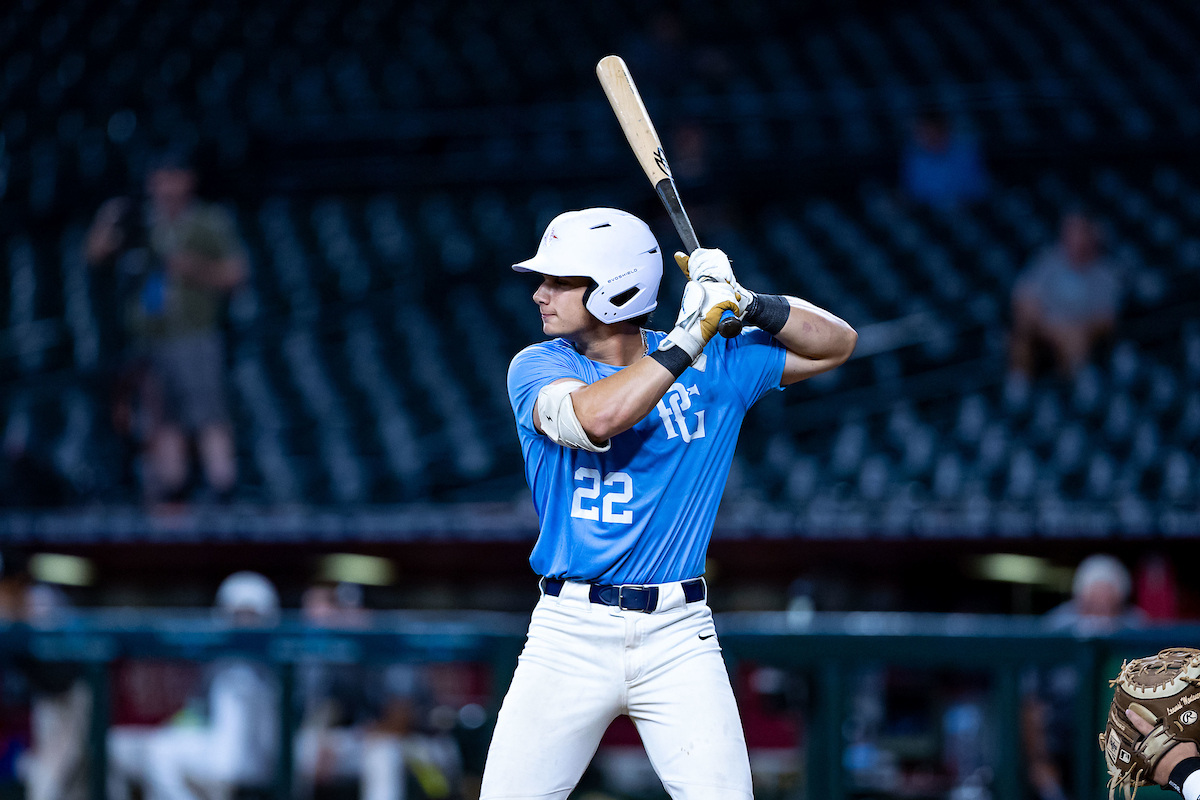Last year, a dynamite sinker and occasionally devastating slider propelled Codi Heuer into some of the White Sox's most important situations by the end of the season. Beyond the 1.52 ERA driven down by a scoreless September, perhaps the most encouraging thing about Heuer's emergence was that he had more to give.
His 14.4 percent swinging strike rate was fine, but it was actually a point below that of Alex Colomé, whose peripherals were long considered a target for regression. Heuer didn't need to get more whiffs -- that's what the 50-percent ground-ball rate is for -- but they remained possible without any great alteration to Heuer's approach. Whether he threw them earlier in the count or just stopped steering so many of them into the left-handed batter's box, he could get more out of his breaking ball.
Alas, he opened the season with wonky command of both pitches. The sinker stayed up, the slider spun, and the middle-middle location on too many pitches led to more hits (six) and runs (one) over three outings in April than he had over 11 appearances last September (five and zero).
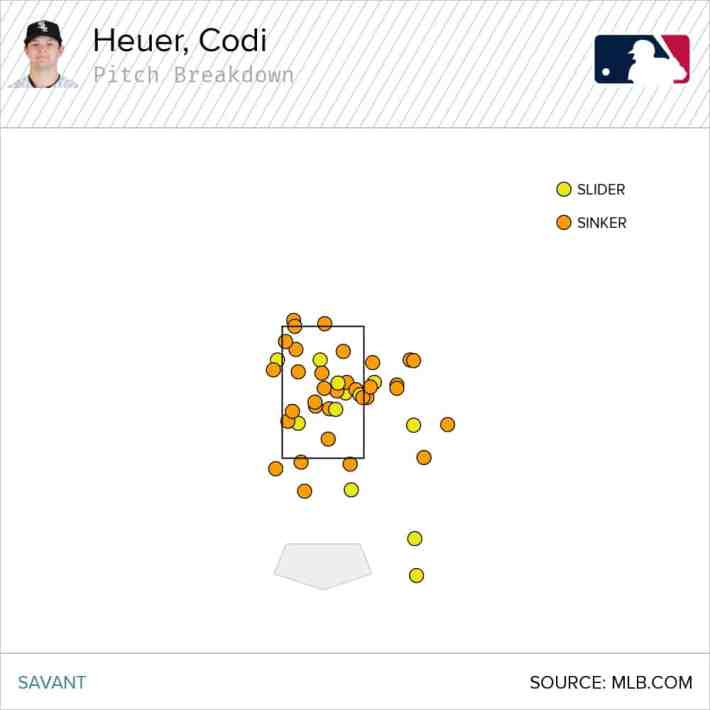
Of the first 12 sliders Heuer threw, only one of them induced a swinging strike, and it was one he shouldn't count on getting. But whether necessity is the mother of invention or desperate times call for desperate measure, Heuer has turned a corner without his best breaking ball.
Here's Heuer's swinging strike leaderboard:
| Pitch | Total | Whiffs | % |
|---|---|---|---|
| Changeup | 12 | 5 | 41.7 |
| Sinker | 52 | 7 | 13.5 |
| Slider | 23 | 3 | 13.0 |
On the one hand, this is a very small sample. On the other hand, Heuer has already exceeded his swing-and-miss total on changeups from last year, when only two of 35 such pitches got whiffs. He didn't get burned on it (zero hits allowed), but he also didn't generate much useful action, as nearly 70 percent of them were taken for balls. Last year, Heuer approached changeups like I do rye beers -- the idea sounds briefly appealing after some time away, only to remember why I avoid them after one swig.
I still don't care for rye beers, but Heuer's acquired the taste for his offspeed offering. He might've only thrown five of them over his 32 pitches against Cleveland on Monday night, but all served a purpose. His first capped off a three-pitch strikeout of José Ramírez ...
... and he was off from there. He went 5-for-5 in strikes with the changeup, getting three whiffs, a routine grounder to second, and a first-pitch take for an 0-1 count. Here they are in quick succession:
The last one is his worst one in terms of location, finishing in the heart of the zone. Yet when you look at Josh Naylor's reaction, he checks up as though he's going to get jammed.
This pitch occasionally showed such life last year, but most of them were useless. He either got under them, or he started them well off the plate. This year, he seems to have found a release point, and the confidence to put them in the zone. The year-over-year pitch charts are startling.
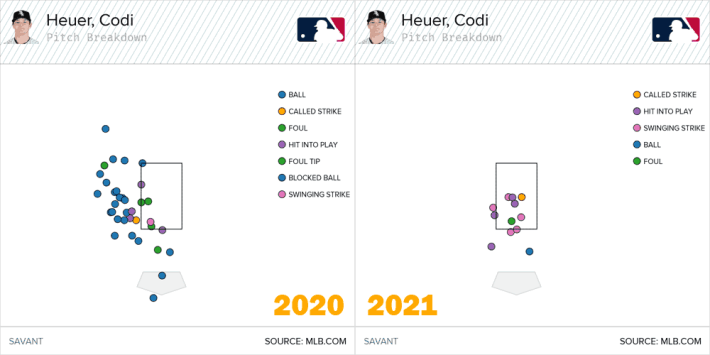
The early success could reflect a mere wrinkle in the scouting report that will be ironed out in short order, but even if its role as his second pitch is only temporary, it does buy him time for the slider to sharpen up. Even better, the similar action and release on his pitch might give his sinker more places to play in the zone. He closed his appearance by striking out Roberto Perez with full-count sinkers at the top of the zone resulting in a pair of strike threes, and it didn't matter that only one was called correctly.
* * * * * * * * *
On the other end of the spectrum of pitches looking different, Liam Hendriks' unimpressive debut in a traditional save situation on Sunday stemmed partially from his inability to pump fastballs by hitters in the manner to which he is accustomed.
When you look at his pitch chart from his appearance on Sunday, he threw his fastball mostly where he wanted them, and with a velocity in line from his last two years. He just couldn't get them completely past Kansas City bats, which fouled off nine of the 16 fastballs they saw.
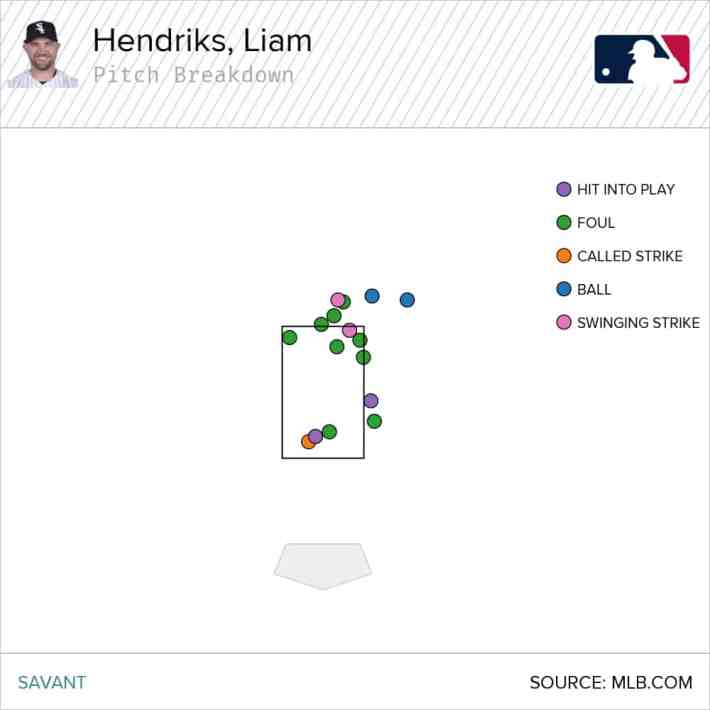
If it's not location or velocity, then the ride is the next culprit. And while that was an issue, James Fegan relayed Hendriks' finer point on it:
You can track this on his Baseball Savant page. He aims for seven feet of extension, but he's been down to 6.7 and 6.6 feet in his last two appearances. It appears to be something that has a little bit of ebb and flow over the course of a season, but 6.6 is lower than any point last season, and so there probably is some need to address it.
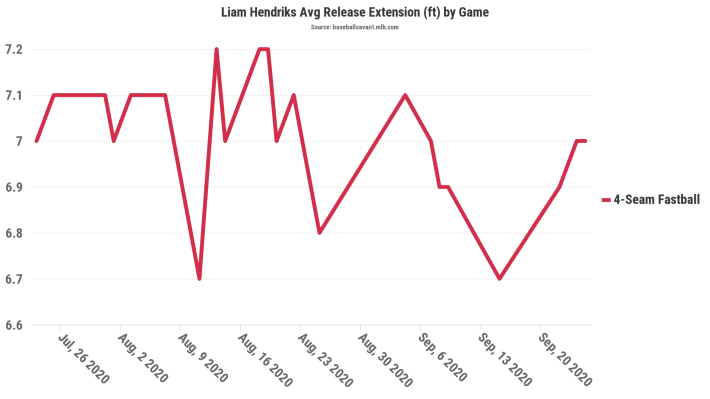
(Photo by John Cordes/Icon Sportswire)
